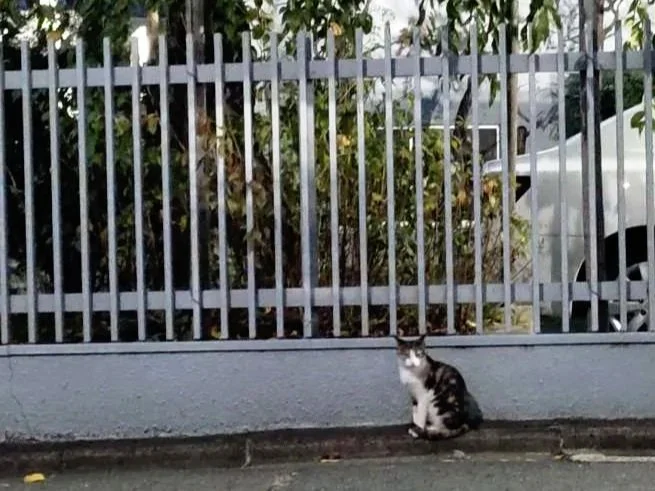Abandonment
This week, we were reminded of what friendly cats face when separated from home and suddenly living out on the streets. People want to believe that lost or abandoned cats probably find other good places to live. But that’s not the reality for most. Abandoned cats will often struggle and eventually die within weeks or months. Before that, they will spend days crying out desperately for help from the people they relied on to keep them safe, but who are no longer around to hear those cries. For #WiseWednesday, here are some myths related to abandonment that we need to address.
Myth 1: It’s safe to leave cats where other cats are living
People commonly abandon cats where they see other cats living or being fed. However, cats already living in an area will be territorially protective of their space and will fight to defend it. They’re used to doing that, and a newly arriving cat is not. Cat fights can be deadly, either by spread of disease or by deep puncture wounds which quickly become infected. If there are a large number of cats living and being fed in an area, a newly arriving adult cat is actually unlikely to stay close to that area or even approach periodically for food. Kittens or younger cats aren’t as smart and are often quickly injured or killed.
Myth 2: There was no choice
There is always a better option than abandoning a cat. If facing a sudden crisis, begin reaching out right away. Yes, there is limited support available, so that means there is a need to reach out far and wide. It’s imperative to screen any offers of help carefully, despite urgent or chaotic circumstances. Reach out, keep reaching out, and be committed to finding a positive outcome. Most importantly, think seriously ahead before taking on the responsibility of an animal family member. This can be a 15 to 20 year commitment, so must not be taken lightly. If you want the companionship of animals but are uncertain about providing a lifetime of care, consider volunteering or fostering instead.
Myth 3: The cat disappeared, so it has surely found a new home
Cats often hide when first in an unknown location, so might not be visible for the first couple of days. If they are injured, they will also either hide or be picked up by city health workers. They may have become trapped while forced to seek shelter. They may need to wander further out in search of less competitive food sources. Humans angry about cats appearing in their area (alerted by their constant crying due to separation anxiety) may remove the cats and surrender them to animal control, relocate the cats elsewhere, or take even more extreme measures. Weakened by the lack of food, many abandoned cats will succumb to starvation, exposure, or a number of other related issues, and die unseen.
Myth 4: A lost cat will come home when bored
Not actively looking for a lost cat is effectively abandoning them, and every day that an active search is delayed lowers the odds of a safe return. While the cat might have initially ventured further out by choice, they won’t remain out unless unable to get back. Lost cats in a new territory face the same dangers that abandoned cats face, and they suffer the same outcomes if not found or if unable to return on their own. It is important to immediately follow active protocols for searching for a lost or escaped cat, and to keep your cat securely indoors to prevent this from happening.
Myth 5: Other people are the problem
When people suddenly lose jobs, family members, health, housing, or face other serious crises, it’s understandable that animal family members can also be severely impacted. No matter how hard a family may try to find a new home for their beloved pet, if there is nobody able to help them, they may find themselves in a very difficult situation. The truth is, no matter how badly an animal rescue group or shelter may want to help out families like these when they are contacted, without more support from the animal loving community as a whole, they may not be able to do so. If there is more availability and support for sheltering, there will be more help preventing friendly cats from ending up or remaining on the streets. We all need to take some responsibility towards creating and ensuring a future safety net for ourselves and others.
We can clearly see that cats feel stress, pain, fear, and other emotions related to suddenly being separated from the life and people they are familiar with. Friendly cats socialized to live with humans will likely experience these emotions to a more debilitating degree. The panic and confusion they suffer puts them at greater risk when suddenly put out on the streets. It’s important to face this stark reality, to plan ahead, to be of help, and to be determined never to leave an animal family member behind. While educating the public and being outspoken about pet abandonment is important, the reality is that money and resources are also required to help cats in desperate and dangerous situations. Consider helping shelters (either donating monetarily or by volunteering for shelter care/foster/transport) alongside boosting posts and commenting in order to make the biggest positive impact you can.
Here are some other articles on the topic, for more information:





